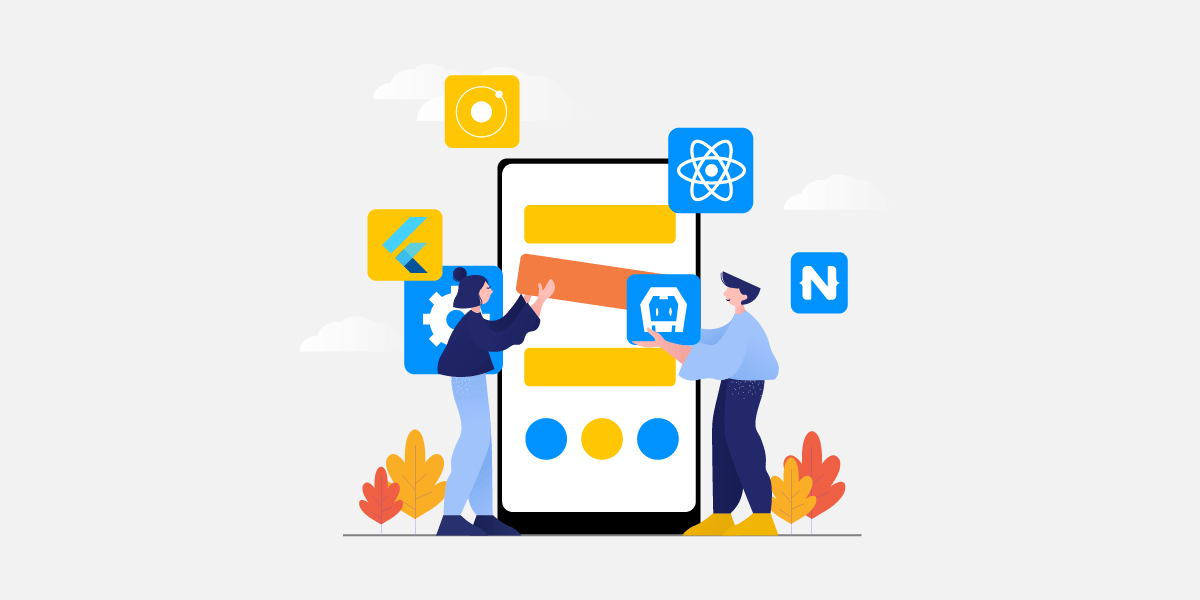Cross Platform App Development
Mobile apps have become important to our daily lives in today’s connected world. We largely rely on applications to meet our requirements for communication, entertainment, or productivity. However, because so many mobile platforms are available, it can be difficult for developers to connect with a wide range of users effectively. Cross platform app development is useful in this situation.
With the help of cross-platform application development, developers can easily construct programs that work flawlessly on several operating systems, eliminating the need for separate development procedures.
I. What is cross platform app development?
While cross-platform development seeks to create a single application that functions similarly on both platforms, native development relies on tools and programming languages created specifically for one platform (iOS apps use Objective-C and Swift, and Android apps use Java and Kotlin).
Developers employ platform-neutral languages like Dart, C#, and JavaScript for near-native cross-platform programming as well as HTML, JavaScript, and CSS for hybrid development while creating cross-platform software. None of these are OS and hardware native languages. The code is then bundled into native containers that may easily connect with the Android and iOS operating systems with the aid of well-known frameworks for developing mobile apps.
Because hybrid and near-native applications combine independent, platform-agnostic code with native code, they can have an almost native appearance and feel. It is feasible to swiftly deploy a product since developers build and reuse the app logic code only once.

By utilizing frameworks and techniques that allow for code reuse, cross-platform app development minimizes the requirement for platform-specific development. The application logic, user interface, and other essential functionalities may all be written once, and then developers can use these shared components to deploy the app across several platforms. This strategy speeds up development, lowers expenses, and increases productivity.
Several frameworks and tools are available for mobile cross-platform app development, including React Native, Flutter, Xamarin, and Ionic. These frameworks give developers abstractions and libraries that let them access platform-specific features and functionalities to build programs with a native appearance and feel.
Businesses and developers can target many platforms simultaneously to reach a wider audience by utilizing cross-platform development. It delivers uniform user experiences across many devices and facilitates the development and maintenance processes.
II. Advantages of Cross-Platform App Development
Although there are many benefits to cross-platform app development, we must constantly consider the unique needs of the project and the constraints of each framework to make sure the method is appropriate for the required application functionality, performance objectives, and target audiences.
| Advantage | Description |
|---|---|
| Code Reusability | Writing code once and using it across several platforms is one of cross-platform app development’s main benefits. Compared to developing unique native apps for each device, this significantly cuts down on development time and effort. Professionals at TECHVIFY frequently reuse the code base, which shortens development cycles and boosts output. |
| Cost Efficiency | Businesses can save money by having a single development team operate on a shared code base with cross-platform app development. There is no need to build separate teams or devote resources to platform development. This simplified method lowers development and maintenance expenses, making it an appealing option for enterprises on a tight budget. |
| Faster Time-to-Market | Experts can release their apps on many platforms at the same time by utilizing cross-platform app development. This gives you a competitive advantage by shortening the time to reach a larger audience. By focusing on establishing a single codebase that can be delivered across numerous platforms quicker than designing and delivering individual apps for each forum. |
| Wider Audience Reach | Your program can be published on numerous platforms, including iOS, Android, and Windows, thanks to cross-platform app development. Businesses can increase their user base and reach a larger audience by concentrating on a small number of platforms. This broader reach has the potential to boost user interaction, brand recognition, and sustainable revenue sources. |
| Consistent User Experience | The cross-platform framework offers experts the tools and frameworks they need to create native-looking programs for any platform. This enhances usability and user happiness by ensuring a uniform user experience across various hardware and operating systems. |
| Simplified Maintenance | A single codebase simplifies maintenance and upgrades. Fixes, additions, and upgrades can be implemented once and used on several platforms at the same time, removing the need for separate platforms and assuring consistent application performance across platforms. |
| Community Support and Ecosystem | Communities and businesses thrive in cross-platform app development frameworks such as React Native and Flutter. Our teams employ a range of community tools, libraries, and plugins to improve development workflows, solve problems, and gain access to pre-built components that allow you to build faster and higher-quality products. |
Learn more about app development:
III. How to Build a Cross-Platform Mobile App
Specific procedures and specifics may differ depending on the framework used and the needs of your project. Throughout the development process, it is critical to examine the framework’s official documentation and resources for specific guidance and best practices.

- Define your app’s requirements as well as its intended audience.
- Select an appropriate cross-platform framework, such as React Native or Flutter.
- Install the essential tools and dependencies to set up the development environment.
- Create the user interface (UI) in accordance with platform-specific design requirements.
- Using the programming language of the chosen framework, create app logic and features.
- Debug and test the app on a variety of devices and platforms.
- Improve app performance by optimizing code and making use of platform-specific improvements.
- Package the app for release in accordance with app store rules.
- Regularly maintain and upgrade the app depending on user input and analytics.
Conclusion
Various cross-platform app development tools are available, practically all of which can cover Android, iOS, and Windows app creation. PhoneGap, Xamarin, and Visual Studio support cross-platform app developers. The Service Interface Layer (SIL) and Data Abstraction Layer (DAL), in addition to the presentation/user interface (UI), Logic/Business Service, and data layers, will provide a suitable amount of abstraction. Right to allow one to adapt to any platform, client, or server that will come. SIL and DAL capabilities enable one’s apps and services to connect to any device the world can think of, allowing them to extend their business and business model.
TECHVIFY – Global AI & Software Solution Company
From Startups to Industry Leaders: TECHVIFY prioritizes results, not just deliverables. Accelerate your time to market and see ROI early with high-performing teams, AI (including GenAI) Software Solutions, and ODC (Offshore Development Center) services.
- Email: [email protected]
- Phone: (+84)24.77762.666





